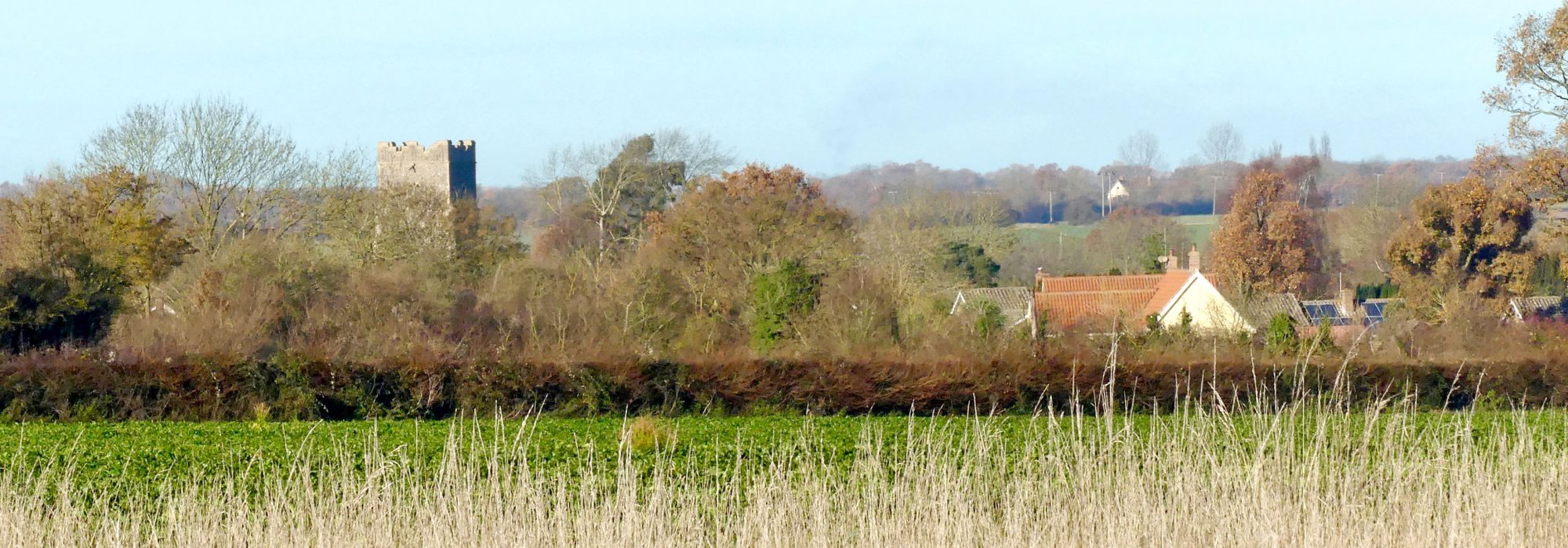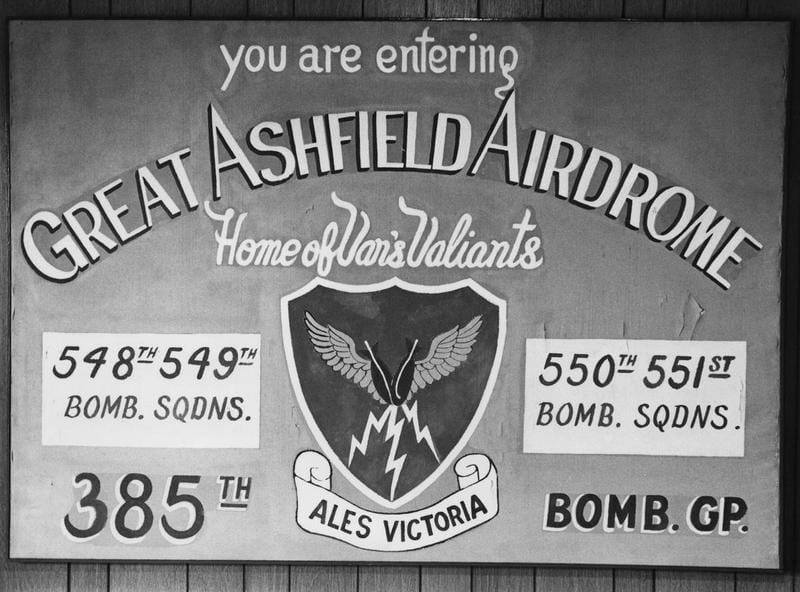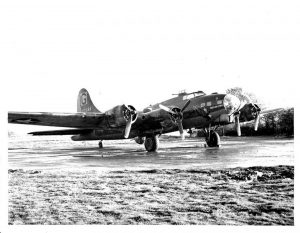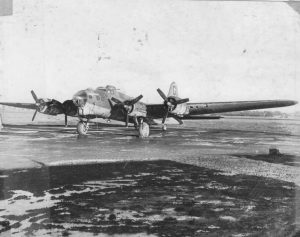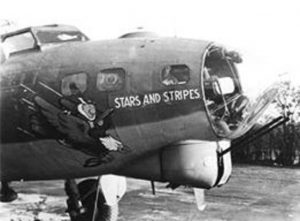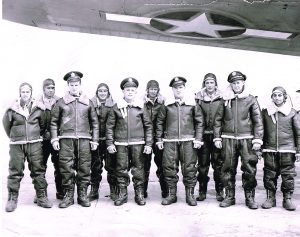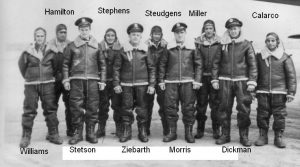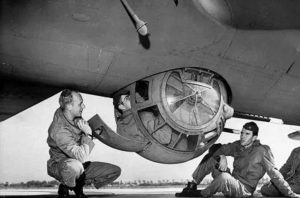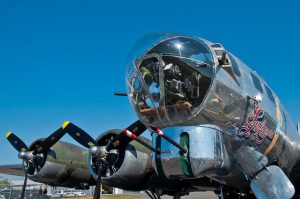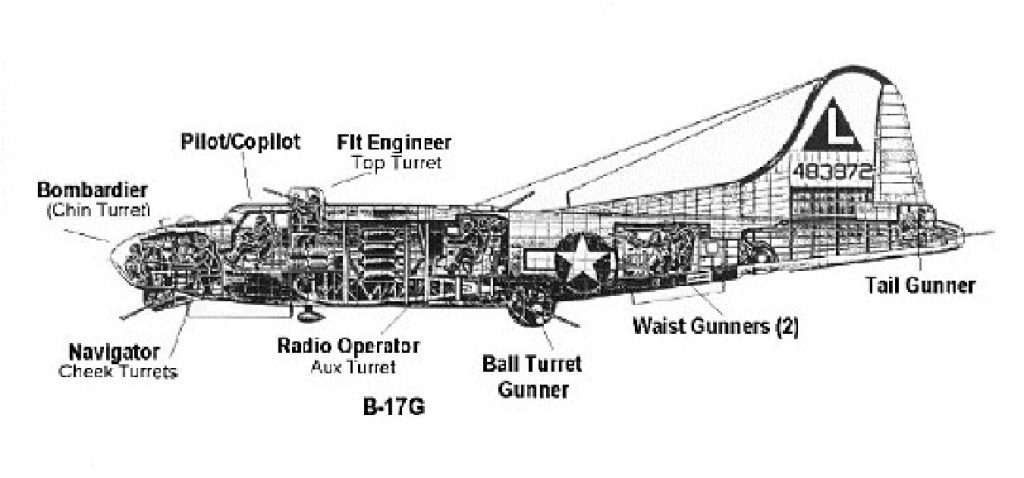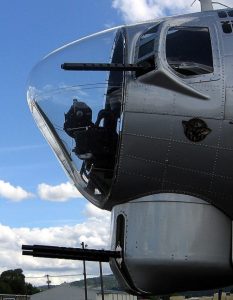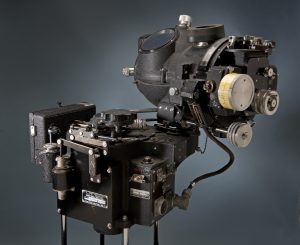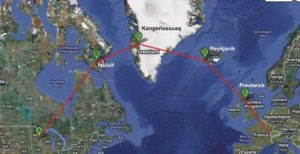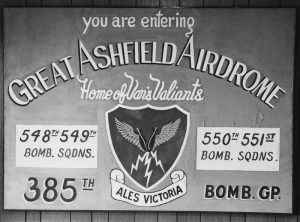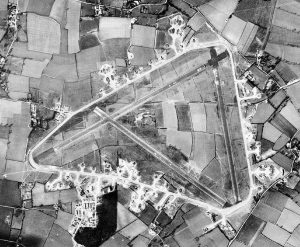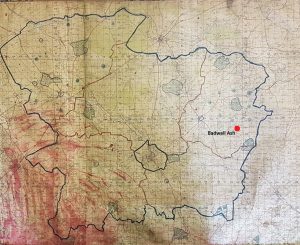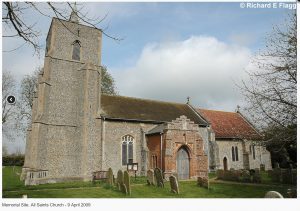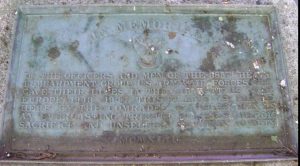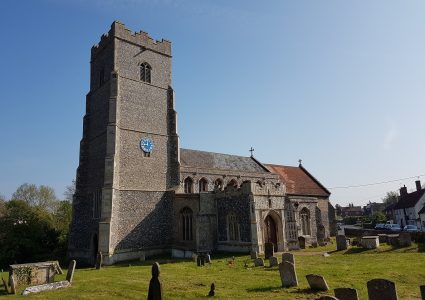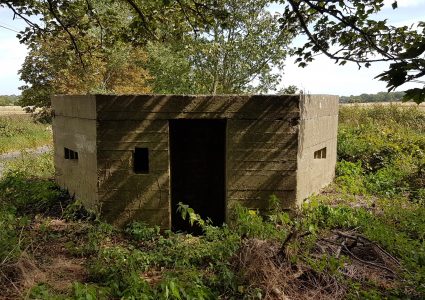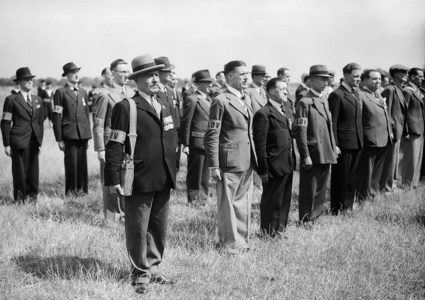- B17 Crash in Badwell Ash during WWII.
- B17 “Flying Fortress
- B17G Flying Fortress “Stars and Stripes” serial no. 42-3544.
- The 385th Bomb Group and Great Ashfield Airdrome
- The Crew of “Stars and Stripes”
B17 Crash in Badwell Ash during WWII
On the 5th January 1944, a B17G “Flying Fortress” four engine strategic heavy bomber of the USAAF crashed soon after take-off from Great Ashfield at Brook Farm in Badwell Ash. Of the nine crew, eight were killed and one suffered serious injuries but survived the war.
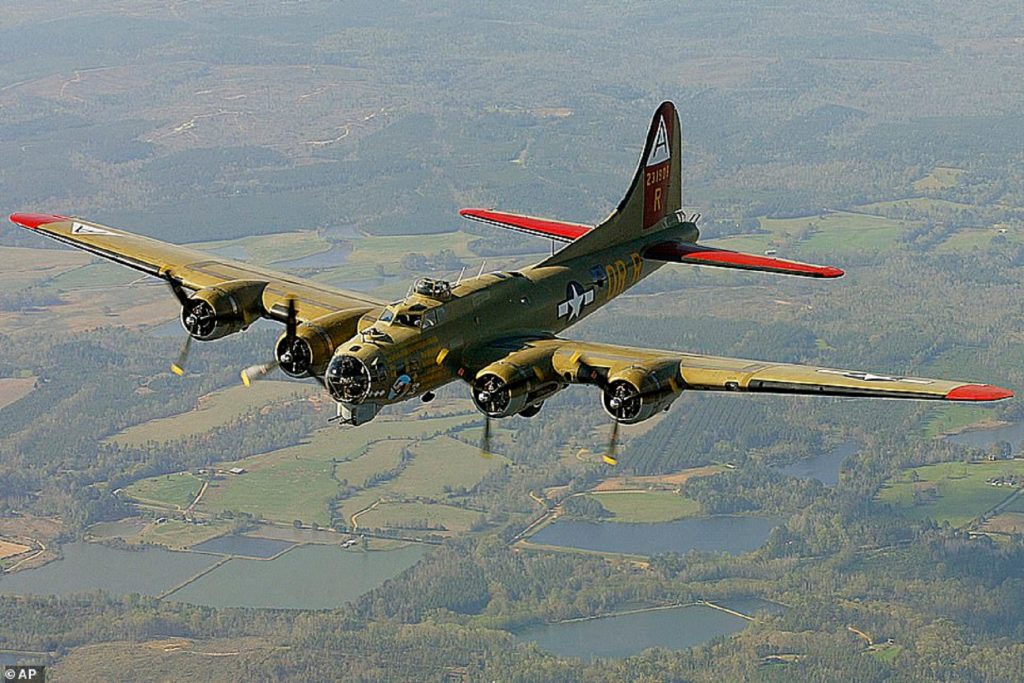
This “Flying Fortress” serial no. 42-3544 named “Stars and Stripes”, was based at the US airfield of Great Ashfield, situated between Great Ashfield and Elmswell.
On the January morning of the fateful crash the weather was bitterly cold and icy which may have contributed to the crash although the “official crash report” suggested pilot error was a contributory factor.
“Stars and Stripes”
The target assigned to the “Stars and Stripes” and the 117 other B17Gs that day was Merignac Airport, Bordeaux in South Western France.
The “Stars and Stripes” took off at 07.25 hours and was intending to climb to 30,000ft. to join the other B17Gs to fly in formation to Bordeaux. However, the plane only reached about 200 feet. The official crash reported stated:
“Witnesses of the crash said the aircraft had reached an altitude of 200ft.when lost to sight. A few seconds later they saw a large flash resulting from this aircraft crashing into the ground. The position of the crash would indicate that the pilot started a slight turn to the right after the take off. The pilot was probably flying on instruments at the time as it was during the hours of darkness.
The plane crashed on farmland to the north-west of the Badwell Ash, off Langham Road near Brook Farm. It is probable that the pilot, Flying Officer William H Morris was aware that there was a problem with the aircraft and was trying to get back to Great Ashfield Airdrome. As a result of the crash, one bomb exploded and together with the impact of the crash, all the crew, bar one, was killed and debris from the plane was scattered over a large area. The plane was carrying 16 M31 300lb bombs.
One of the 0.50in. calibre Browning machine guns was “liberated” by one of the villagers who went to the crash site. That machine gun was eventually donated to the Rougham Control Tower Museum at Bury St. Edmunds.
There were nine men on the ”Stars and Stripes” that day. The official crash report said that “due to the sudden illness of one crew member just prior to take off, only nine men were aboard the aircraft at the time of the crash”. The nine members of the crew were:
- Pilot – Flying Officer William H Morris
- Co-Pilot – 2nd Lt. Dennis J. Ziebarth
- Navigator – 2nd Lt. Richard S Proctor
- Bombardier – 2nd Lt Robert M Totaro
- Top Turret Gunner T/Sgt Russell A Stevens
- Radio Operator/Gunner – Sgt. Chester A Rober, Jr
- Ball Turret Gunner – S/Sgt Walter A Stuebgen
- Waist Gunner – Sgt. Stanley Lowitz
- Tail Gunner – S/Sgt Burnell W Hamilton
Only S/Sgt Burnell W Hamilton, the Tail Gunner, survived. It is told in the village, although we have no evidence to confirm this, that as the aircraft came down, it hit the top of a ditch which broke off the tailplane and rear gun position. Both ended up in the ditch whilst the remainder of the plane was destroyed in the subsequent crash and explosion. If it is true, it undoubtedly was the reason S/Sgt. Burnell’s life was saved.
The official crash report proposed a reason for the crash and described, in some detail what exactly happened: “It is very possible that the superchargers were pulled off too soon and the aircraft, which was carrying a maximum load, with the reduction of power, the aircraft lost altitude and came into contact with the earth’s surface before the pilot realized what was happening. This is borne out by the fact that the aircraft hit the ground in a semi-stall position. The right wing tip hit first, then the ball turret, the number four prop, three, two and one in that order. These facts are determined from the wreckage on the ground.”
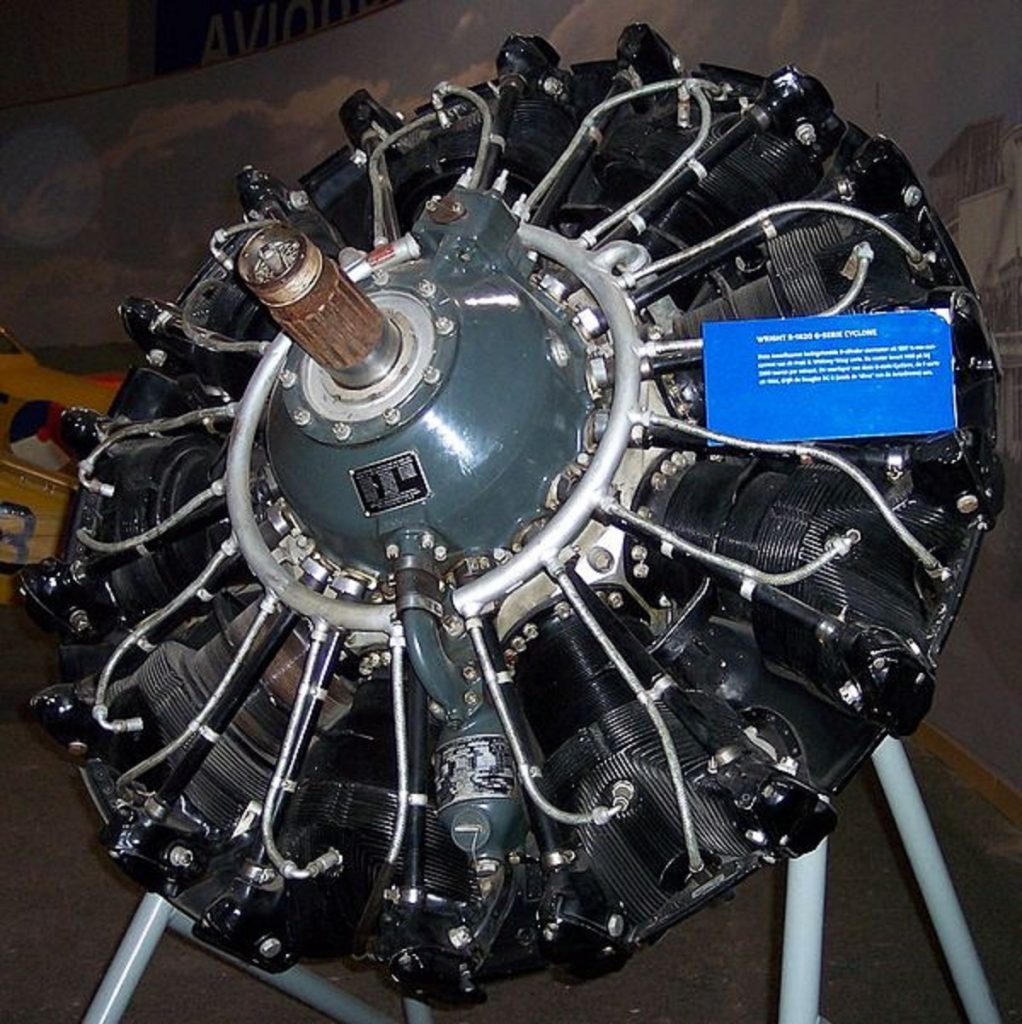
According to the flight training manuals of the day supplied by Boeing, the aircraft’s manufacturer, the four General Electric Turbochargers worked off the four Wright R1820 radial engine’s exhaust pressure and it was essential that they be turned on to maximum power for takeoff, especially with a full bomb load. If the superchargers were turned off too soon, a contributory factor may have been the icy conditions which may have built up on the wings of the plane as it took off. This would have increased the weight of the bomber which together with the loss of power due to the superchargers being switched off too early would have prevented the airplane from gaining altitude.
There’s an un-corroborated story in the village that as a result of the explosion, all the windows on the northern side of St. Mary’s church were severely damaged and had to be replaced. The windows on that side of the church are all plain glass and much newer than in the rest of the building.
On 3rd August 2015, a commemorative service was held in memory of the nine men who died on the 5th January 1944 in the “Stars and Stripes”. A plaque was unveiled beneath the village sign which also doubles as a WWI and WWII War Memorial to the fallen of Badwell Ash.
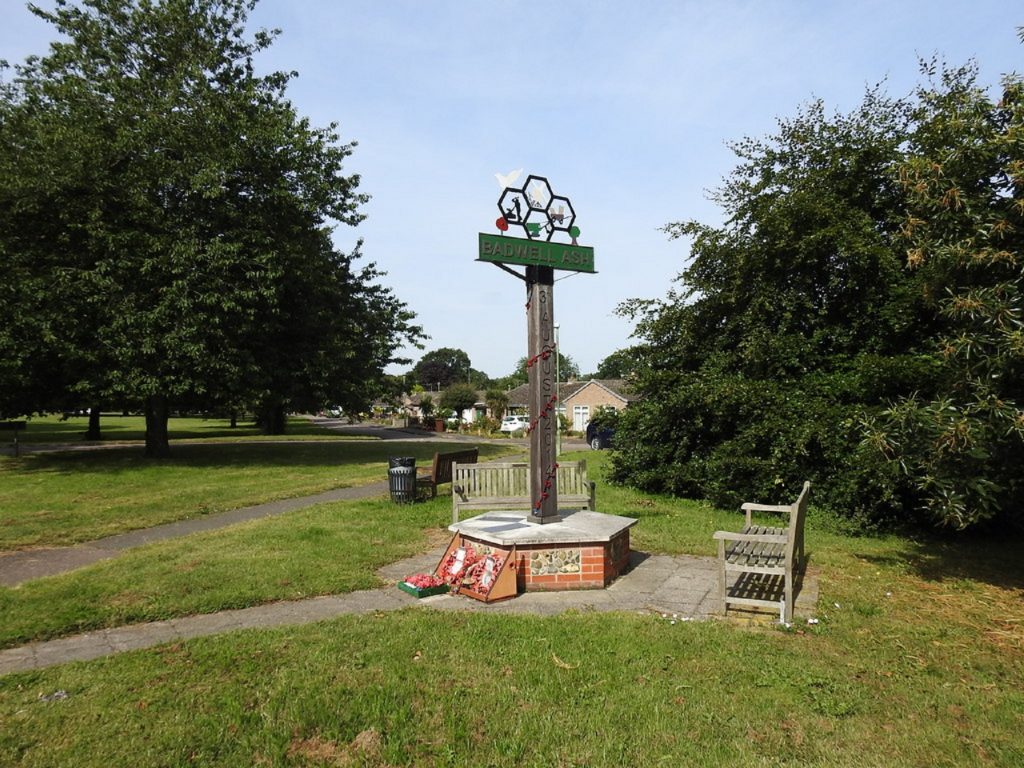
B17 “Flying Fortress
In 1934, the Boeing Aircraft Company of Seattle, Washington, USA began construction of the forerunner of the B17 heavy bomber. This was in response to the US Government’s requirement for a four-engine heavy bomber to protect the American mainland from invasion fleets. Originally known as Boeing Model 299, the airplane first took flight on July 28, 1935. The model, whose role had now changed to a daylight heavy bomber, was deemed a great success and delivery of these first production models was made in 1937.
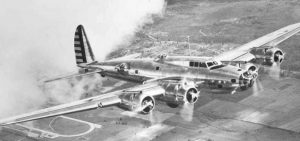
It became known as “The Flying Fortress” due to a Seattle newspaper reporter commenting on its defensive firepower saying it was a “Flying Fortress”. The name stuck! Boeing also re- designated it as the B17A. For its time, the use of five 0.30in. calibre machine guns for defence of the airplane, was unprecedented.
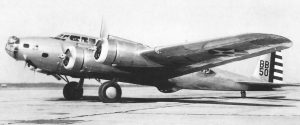
After Pearl Harbour was bombed by the Japanese on December 7, 1941, the production of the B17 was “ramped up” as there were very few in service. Their long-range capability meant that formations of B-17s were intended to fly into battle in close box formations with no fighter escort, relying wholly on their own defensive capabilities to insure a successful mission. However, the defence expected from bombers operating in close formation alone did not prove effective and the bombers needed fighter escorts to operate successfully. However when the U.S.A. entered European theatre of WWII there were no fighter aircraft with the long ranges necessary to accompany the bombers both to and from their targets in Europe. As a result, subsequent variants of the airplane showed a progressive increase in the number of machine guns deployed to protect them from perceived vulnerabilities. In addition, the calibre of the guns was increased from 0.30in. to 0.50in.
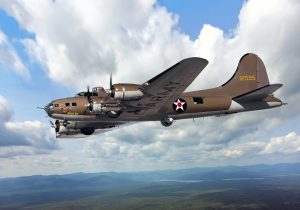
The first truly mass-produced model was known as the B-17E . It now carried nine 0.50in. calibre machine guns and a 4,000-pound bomb load. It was a very extensive revision of the Model 299 with a fuselage extended by some 3.0m (10’0”) and a gunner’s position added to the tail where the aircraft was vulnerable. Further, an electrically operated twin 0.50in machine gun turret was added just behind the cockpit.
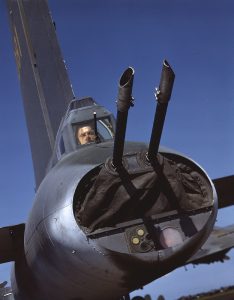
Another addition to the airplane’s defensive capability was the addition of a tail gun with twin 0.50in calibre Browning machine guns. This was added to the plane in 1942. This was very much a “retro-fit” to try to defend the airplane from Luftwaffe attacks from directly behind the airplane and it was very much a compromise. However, the space for the gunner was so small that he did not actually sit down. Due to the limited space, the gunner had to kneel down on the floor whilst resting on what was essentially a bicycle seat. Extremely uncomfortable in a 6 to 7 hour flight!
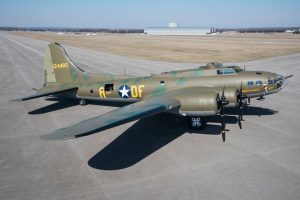
The B-17F was developed for the European theatre of war and included a Sperry ball turret with twin 0.50in. machine guns underneath the fuselage where there was considered to be another defensive “blind spot” as well as an enlarged Plexiglas nose which improved the bombardier’s forward vision.
However, its defensive shortcomings were soon to be exposed by the Luftwaffe’s fighters as the airplane lacked adequate fire power against a head-on attack. By September 1943, a Bendix “chin” turret” (Photo B17G_15) with twin 0.50in machine guns was fitted to all B17s to remedy this defensive weak point and this variant was called the B17G.
The Flying Fortress “Stars and Stripes” serial no. 42-3544 which crashed in Badwell Ash was a B17G.
The Specification of the B-17G Flying Fortress was as follows:
Armament: 13.50-cal. machine guns; normal bomb load of 6,000 lbs
Engines: Four Wright Cyclone R-1820s of 1,200 hp each
Maximum speed: 300 mph
Cruising speed: 170 mph
Range: 1,850 miles
Ceiling: 35,000 ft.
Span: 103 ft. 10 in.
Length: 74 ft. 4 in.
Height: 19 ft. 1 in.
Weight: 55,000 lbs. loaded
The usual compliment of crew in a B17G was 10. These comprised The Pilot, Co Pilot, Navigator, Bombardier, Radio Operator/Gunner, Top Turret Gunner/Engineer, Ball Turret Gunner, Right Waist Gunner, Left Waist Gunner and Tail Gunner. This graphic shows their locations within the airplane.
The primary role for a B17G “Flying Fortress” was as a strategic heavy bomber. It carried 4,800 lbs (2,200 kg) of bombs carried in the bomb bay behind the cockpit. To deliver the bombs accurately, the U.S. developed the Nordern bomb sight (Photo B17G_17 Nordern Bomb Sight in the nose of a B17G). The development of the Nordern bomb sight took place in the years immediately preceding WWII and was continually developed and refined throughout the war. The research team led by Carl Nordern claimed that their bombsight (Photo_B17G_18 Nordern Bomb Sight) “Could put a bomb in a pickle barrel from 20,000 feet!” The total cost of developing the bomb sight reached a staggering $1.5billion dollars by the end of the war. The problem to solve was a one. The airplane needed to drop its bombs accurately on the target from 30,000 ft. whilst flying at 250 mph. The airplane would probably drop its bombs some 2 to 3 miles from the actual target and by the time the bombs exploded on the target the airplane would be some 2 to 3 miles beyond the target. The question is – was the Nordern bomb site successful? Much research has been carried out and the overall conclusion was that the Nordern bomb sight had, at best, a 35% accuracy rate but in the “usual” conditions of dropping bombs over Northern Europe where the weather played a very important part, that accuracy dropped to an average of between 5% and 10%. Perhaps the most telling indictment of the accuracy and usefulness of the Nordern bomb was a telling quote from a pilot who, during an in-flight emergency during the war ordered the crew to.”……dump everything overboard. All the ammunition, machine guns, even the Nordern Bombsight which Lieutenant Fitzsimmons took a great deal of pleasure tossing out!”
A total of 276,000 B17s were manufactured during the war and of these, over 12,000 were destroyed by enemy action. A total of 1.5 million tons of bombs were dropped on Nazi Germany and its occupied territories by U.S. aircraft and over 640,000 tons of these were dropped from B-17s. The U.S. Army Eight Air Force was based in England during WWII. Some 2 million men passed through the Eighth during WWII and at its peak, between 1943 and 1944 some 80,000 men were based in the U.K. Of the aircrew, some 47,000 men were casualties of which 26,000 died. Some 8,938 men of the U.S. Army Eight Air Force who were casualties are commemorated at The Cambridge American Cemetery ; the remains of 3,811 war dead are buried here and 5,127 men commemorated on the Walls of the Missing
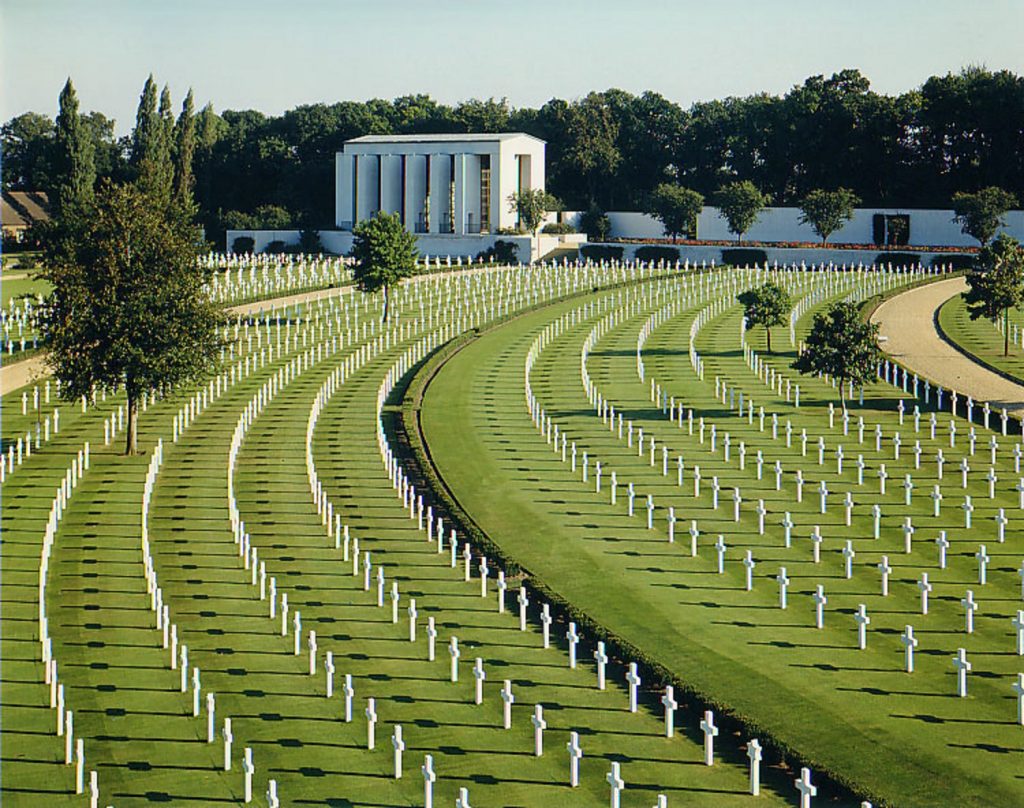
B17G Flying Fortress “Stars and Stripes” serial no. 42-3544.
The “Stars and Stripes” , serial no. 42-3544 was delivered to Lowry Air Force Base in Denver, Colorado on the 27th July 1943. The airplane would have then probably taken the North Atlantic Ferry Route (Photo B17G_20 North Atlantic Ferry Route) which many WWII airplanes took to get from the United States to Great Britain. The aircraft flew from bases in New England, to Labrador in Canada, onto Greenland, Iceland and then on to Prestwick in Scotland. From there, the airplanes were delivered to their eventual destination bases in England which, in the case of the “Stars and Stripes”, was Gt. Ashfield, home of the 385th Bomb Group (Photo B17G_2_Great Ashfield Airdrome385th Bomb Group). The airplane arrived in Gt. Ashfield in September 1943 and would have then immediately flown on missions to bomb Germany and German occupied Europe.
The “Stars and Stripes” was less than a year old when it crashed in Badwell Ash on the 5th January 1944. The airplane was written off as it was deemed too badly damaged to be brought back into service but parts of it were salvaged two days after the crash on the 7th January and would probably have been used for spares.
Strangely, one of the airplane’s Browning 0.50in. calibre machine guns has ended its life on display at Rougham Control Tower Aviation Museum just to the east of Bury St. Edmunds. It’s suspected that it was “liberated” by one of the villagers shortly after the crash and then donated to the museum some years later.
The 385th Bomb Group and Great Ashfield Airdrome
The B17G Flying Fortress “Stars and Stripes” was a part of the 385th Bomb Group who were based at Great Ashfield Airdrome. The 385th took the nickname of “Van’s Valiants” after Brigadier General. Elliot Vandevanter Jr. who was their first Commanding Officer.
The airfield or airdrome as the U.S. called it, a Class ‘A’ airfield suitable for heavy bombers, was built in 1942 by John Laing & Son Ltd. It was one of several that were constructed in West Suffolk during the war as this Airfield Map from 1944 shows. The 385th Bomb Group moved in during the summer of 1943 and remained at Gt. Ashfield flying B17 “Flying Fortresses” until the end of the war in 1945. The site was abandoned in 1959-1960. Further information about Great Ashfield Airdrome can be found on the Elmswell History Group website at: http://www.elmswell-history.org.uk/archive/work-society/elmswell-great-ashfield-airfield/
During the course of the war, a total of 296 missions were flown by B17s, of which 129 were lost with approximately 1,290 men killed. The 385th won two Distinguished Unit Citations. The first was for a raid on an aircraft factory at Regensburg, on 17 August 1943 and the second was awarded after leading a difficult long-range mission to destroy an aircraft repair works at Zwickau, south-west Germany, on 12 May 1944.
There is an excellent website with a huge amount of detail about the 385th Bomb Group at: https://www.384thbombgroup.com/ and via the 385th.
The Commanding Officer of the 385th, Elliott Vandevanter Jr. was born in Baltimore, Maryland in the U.S.A. in 1917, the son of the late Colonel Elliott Vandevanter. Brigadier General Elliot Vandevanter Jr. was only 27 year old when he became commanding officer of the 385th at Great Ashfield. He flew 24 operational missions from Great Ashfield including several raids to Berlin and one to Schweinfurt-Regensburg where the German factories that built the Focke Wolf FW90 were built. Much more information about Elliott Vandevanter Jr can be found on the American Air Museum website: www.americanairmuseum.com.
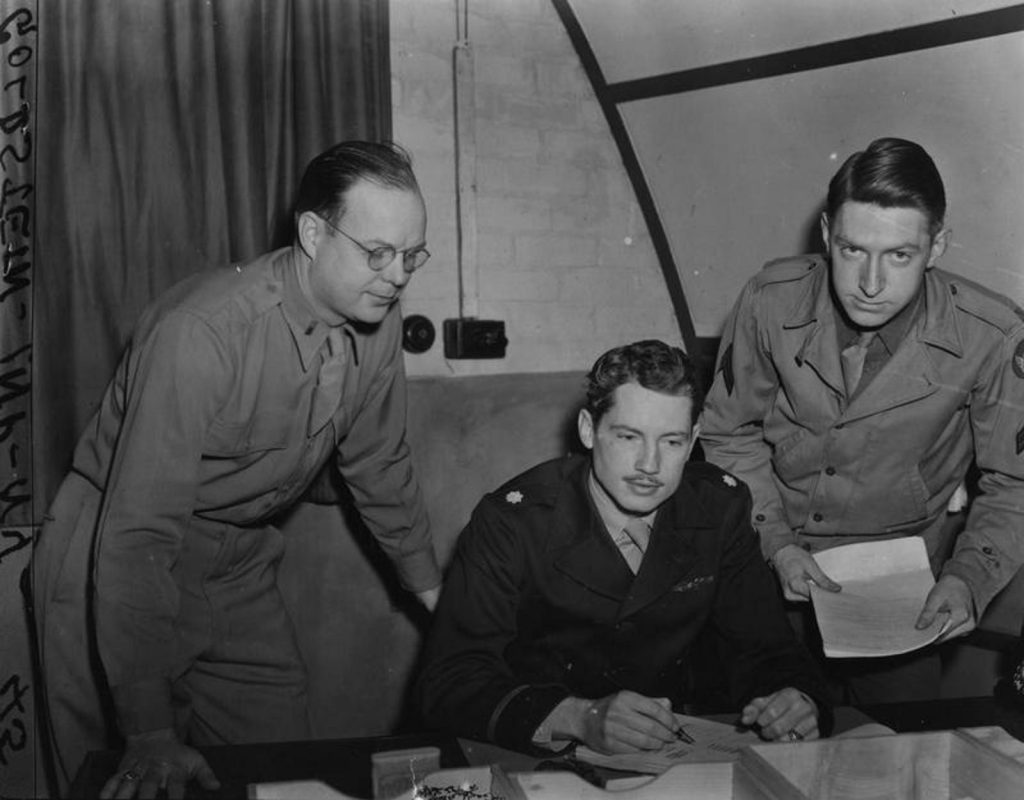
There’s further information about Great Ashfield Airdrome on the Historic England PastScape site: https://www.pastscape.org.uk/hob.aspx?hob_id=1396127 and on the Suffolk Heritage Explorer website: https://heritage.suffolk.gov.uk/hbsmr-web/record.aspx?UID=MSF24399-RAF-Great-Ashfield-Airfield&pageid=16&mid=9
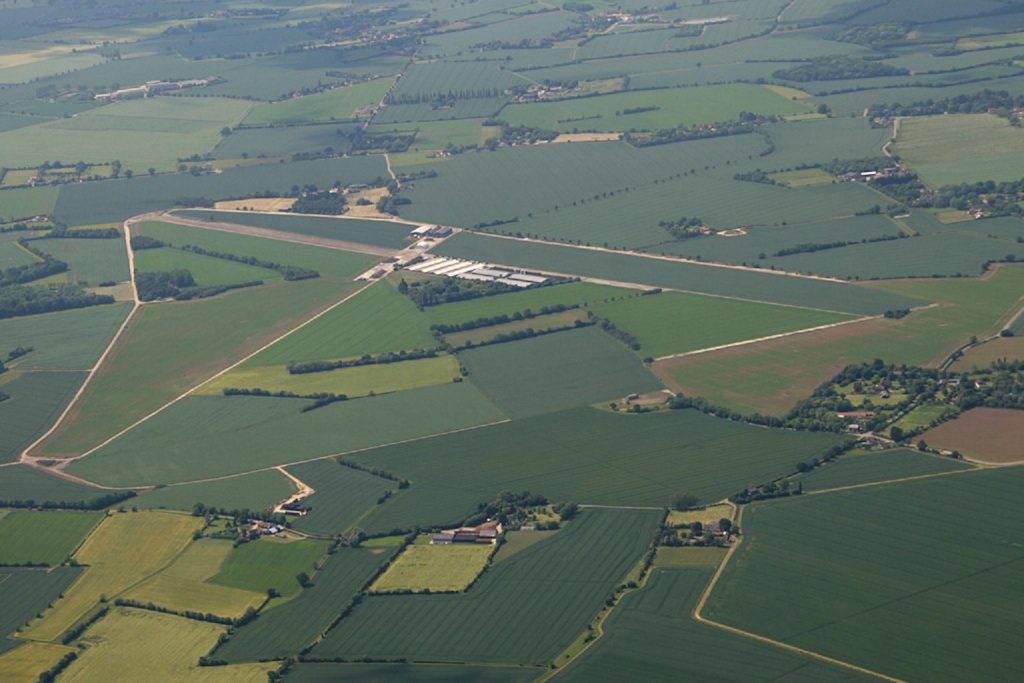
You can see a home video taken by one of men based in Great Ashfield in July 1944 here.(Badwell Ash Fete MP4) The Flying Officer getting out of the staff car at the very beginning of the video looks very much like Elliot Vandevanter Jr.
The footage also shows the Great Ashfield and Badwell Ash Fete and Sports benefit held at Ashfield Lodge on Monday August 8th in the same year.
All Saints Church in Great Ashfield (Photo B17G_23 All Saints Church Great Ashfield) has a commemorative stained glass window (Photo B17G_24 All Saints Church Great Ashfield _ 385th Bomb Group Memorial Window) in the nave to the 385th Bomb Group and it also holds a Book of Remembrance. There is also a memorial stone (Photo B17G_25 All Saints Church Great Ashfield _ 385th Bomb Group Memorial) in the churchyard. In the church, on the right hand canopied panel, which is part of the altar and reredos, there is an inscription that reads:
IN MEMORIAM. DEDICATED TO THE EVERLASTING MEMORY OF THE OFFICERS AND MEN OF THE 385TH BOMBARDMENT GROUP 8TH AIR FORCE US ARMY WHO GAVE THEIR LIVES IN HEROIC SACRIFICE AND UNSELFISH DEVOTION TO DUTY. WORLD WAR II MCMXLV
The village sign at Great Ashfield depicts a B17G flying over All Saints Church.
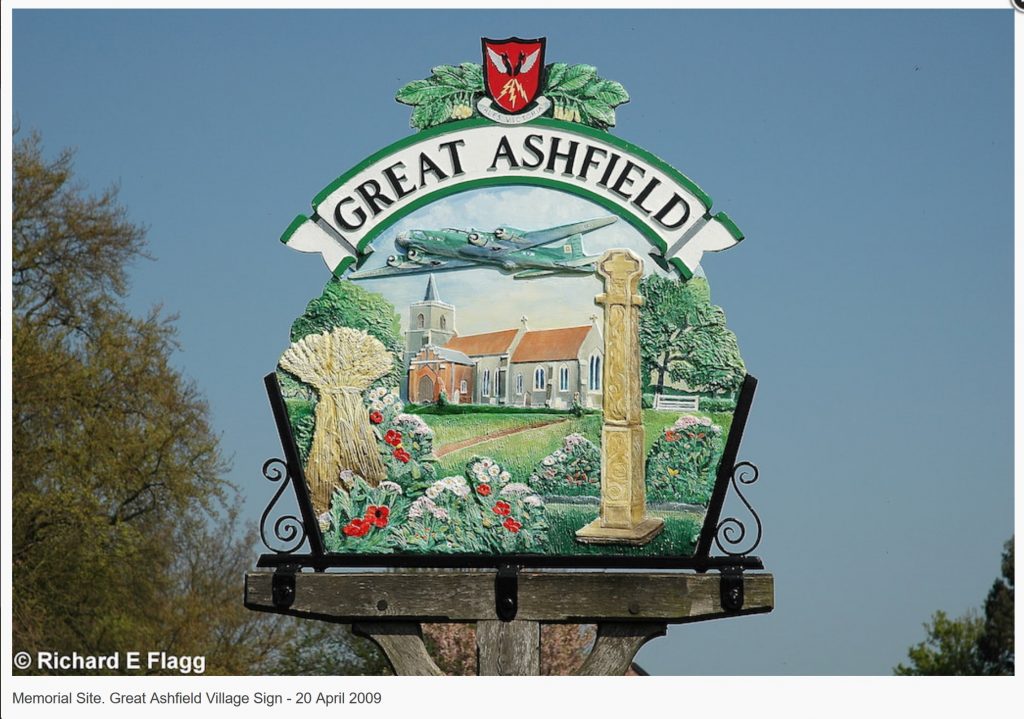
The Crew of “Stars and Stripes”
- Ball Turret Gunner – S/Sgt Walter A Stuebgen
- Bombardier – 2nd Lt Robert M Totaro
- Co-Pilot – 2nd Lt. Dennis J. Ziebarth
- Navigator – 2nd Lt. Richard S Proctor
- Pilot – Flying Officer William H Morris
- Radio Operator/Gunner – Sgt. Chester A Rober, Jr
- Tail Gunner – S/Sgt Burnell W Hamilton
- Top Turret Gunner T/Sgt Russell A Stevens
- Waist Gunner – Sgt. Stanley Lowitz
